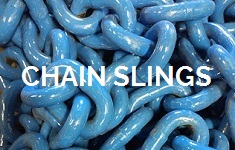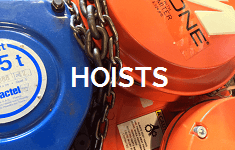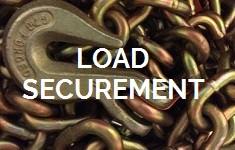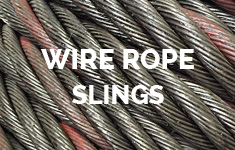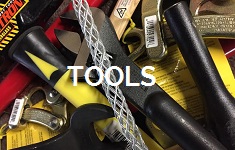The movement of heavy objects requires machinery that is specialized in performing such actions. The lifting industry is crucial for sectors like construction, mining, transport, oil and gas, entertainment, etc.
Lifting equipment is designed to effectively move objects or loads while minimizing the risk of damage to the goods and injury to workers. Common types of machinery include cranes, hoists, and forklifts, all of which use mechanisms specifically adapted to their work type.
The lifting industry is highly regulated to ensure workplace safety, which is why many different types of spreader bars or spreader beams are used for executing this particular action.
Types of Spreader Bars
A spreader bar is a device used as an extension to cranes that allows for an equal distribution of the load over multiple lifting points. It has a straight beam, usually with two attachment points for lifting equipment, like chains or slings.
Not using a spreader bar would mean lifting heavy loads with a single attachment point which is dangerously unstable. Heavy objects can cause the load to shift during the lifting process and, in the worst case, fall down, resulting in damages and exposing workers to potential dangers.
Therefore, there are various types of spreader bars designed to fit different purposes, i.e., lift different types of load. The categorization is mostly determined by the adaptability of the device.
Regardless of the type, all spreader bars must comply with OSHA and ASME B30.20 regulations. The former is about safety workplace standards in the USA, which covers all lifting operations in general. The latter is more specific and covers all below-the-hook lifting devices, such as spreader bars.
Here are some types of spreader bars used in the lifting industry:
- Fixed spreader bars
- Adjustable spreader bars
- Modular spreader bars
- Basket-style spreader bars
Fixed Spreader Bars
Fixed spreader bars are useful when the weight and the dimensions of the load don’t change during the entire lifting operation because, as the name suggests, they are fixed in regard to length and size.
Fixed spreader bars offer more stability than adjustable ones because they are specifically designed for certain load dimensions and weights.
If the dimensions and weight of the load don’t change, then having fixed spreader bars are more cost-effective, durable, and easier to use than adjustable spreader bars.
Adjustable Spreader Bars
These types of spreader bars can be adjusted in length in order to be used for various applications. The way to adjust the length is by manipulating the position of the attachment points at each end to accommodate different load dimensions.
The adjustable spreader bars are not as stable as the fixed ones, but the advantage they offer is that they can be used to fit multiple dimensions of objects or loads.
The design of the adjustable spreader bar is such that the length of the spreader bar is adjusted in a telescopic way, i.e., the bar has an extension moving within itself.
Adjusting the length of the bar is fairly easy and modifiable. Once the dimensions are determined, the bar needs to be extended or reduced to the desired length, which is where the pin or pins will be installed.
Modular Spreader Bars
These spreader bars allow for increased versatility because they are fabricated in pieces and can be assembled in different configurations to fit different load dimensions.
They consist of many replaceable sections that can be combined in a number of ways to create the optimal configuration needed for a specific load. The advantage of using modular spreader bars is that their components are lightweight and can be easily delivered and assembled on-site.
Also, in the case of malfunction, the components are repaired in isolation instead of servicing the whole device.
Basket-style Spreader Bars
Basket-style spreader bars have four attachment points with the purpose of distributing the weight even more evenly. The attachment points form a basket-type form hence the name of the configuration. They are sometimes referred to as cradle spreader bars.
They are most commonly used with steel beams, pipes, and other shapes. Some basket-style spreader bars are adjustable, and others are fixed with specific dimensions.
Spreader Bar Rental
Now that you know about various types of spreader bars, you can visit us at Tway Lifting and check out our spreader bar rental service.
You are one phone call away from acquiring our services and renting our equipment. Our trained personnel will help you determine your needs and come up with solution ideas for your problems.
Frequently Asked Questions
How to choose the right spreader bar for a specific task?
Choosing the right spreader bar requires assessing the load’s weight, shape, and size. Then, it needs to be paired with the equipment that has the configurations to safely and effectively handle such a load.
What is WLL?
WLL, or workload load limit, is the maximum weight a specific spreader bar is designed to lift. To calculate the WLL, factors like the material of the spreader bar, its design, and its construction are considered, as well as the number of attachment points.
What safety precautions should be taken when lifting with a spreader bar?
There are many safety precautions, but first and foremost, it is vital to use an adequate spreader bar for the specific load.
Using the correct type and size of sling or other lifting device and not exceeding the WLL. The load should be well-balanced and stable, etc.
How do spreader bars distribute the weight more evenly?
Spreader bars have multiple attachment points. When you lift a load with a single attachment point, the weight is concentrated on that point, putting stress on the machine. This is based on the Principle of Moments.
Summary
Spreader bars are used to lift objects or loads with better weight distribution. There are fixed, adjustable spreader bars, modular, and basket types of spreader bars that are distinguished by their design and purpose.
They are commonly used in construction, mining, manufacturing, shipping, and many other industries. Their popularity is down to them minimizing the risk of damage or injury to workers.




